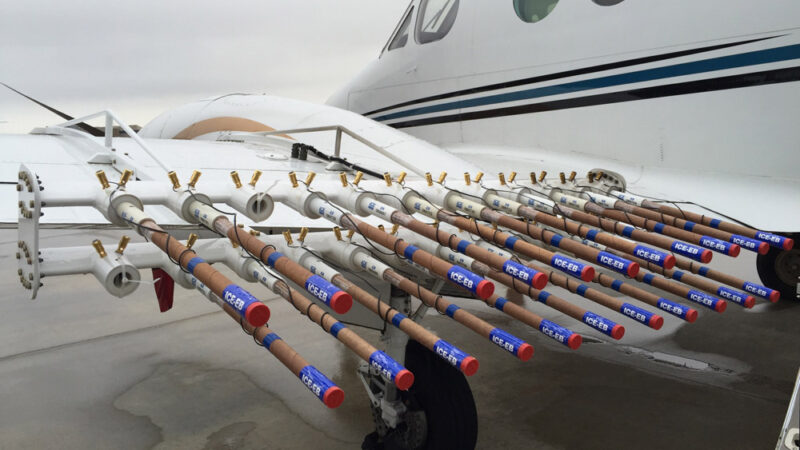CDC keeps secret its mishaps with deadly germs & potential bio-terror pathogens

HFI: CDC experiments with dozens of the world’s most dangerous bacteria and viruses and potential bio-terror pathogens. CDC scientists apparently lost a box of deadly and highly-regulated influenza specimens and experienced multiple potential exposures involving viruses and bacteria, according to heavily-redacted laboratory incident reports obtained by USA TODAY. Several reports involve failures of safety equipment. In one, a scientist wearing full-body spacesuit-like gear to protect against lethal, often un-treatable viruses like Ebola, had their purified air hose suddenly disconnect — “again” — in one the world’s most advanced bio-safety level 4 labs.
USA TODAY’s “Biolabs in Your Backyard” investigation has revealed hundreds of safety incidents at public and private research facilities nationwide and highlighted how many university, government and private labs have fought to keep records secret about incidents and regulatory sanctions. The USA TODAY investigation also exposed that more than 100 labs working with potential bioterror pathogens have faced secret federal sanctions for safety violations, yet regulators allowed them to keep experimenting while failing inspections, sometimes for years.
USA TODAY also revealed details about the operations and safety records of more than 200 high-containment labs across the nation, facilities whose identities have eluded even the Government Accountability Office. More than 100 labs working with potential bio-terror pathogens have faced secret federal sanctions for safety violations, yet regulators allowed them to keep experimenting while failing inspections, sometimes for years.
In addition to being a lab operator, the CDC co-runs the Federal Select Agent Program that inspects and regulates government, university, military and private labs that works with these regulated viruses, bacteria and toxins. The U.S. Department of Agriculture is CDC’s partner in the regulatory program.
After winning a Freedom of Information Act appeal last year, USA Today revealed that the CDC is among a small group of biolab operators nationwide that have the worst regulatory histories in the country, receiving repeated sanctions under secretive federal regulations.
Incidents such as: In April 2014, a mangled box filled with biological samples – at least one of them broken – arrived without any labels that it contained infectious materials by regular United Parcel Service delivery to the desk of a CDC worker, rather than to a laboratory. The box, from the North Carolina State Laboratory of Public Health, had been shipped in a re-used box without appropriate packing materials and arrived with a “gaping hole” in one corner, according to the CDC emails. Inside the box were specimens of bacteria that cause potentially life-threatening Typhoid fever.
The Centers for Disease Control and Prevention, which has faced congressional hearings and secret government sanctions over its sloppy lab safety practices, is keeping secret large swaths of information about dozens of recent incidents involving some of the world’s most dangerous bacteria and viruses.
CDC scientists apparently lost a box of deadly and highly-regulated influenza specimens and experienced multiple potential exposures involving viruses and bacteria, according to heavily-redacted laboratory incident reports obtained by USA TODAY. Several reports involve failures of safety equipment. In one, a scientist wearing full-body spacesuit-like gear to protect against lethal, often un-treatable viruses like Ebola, had their purified air hose suddenly disconnect — “again” — in one the world’s most advanced bio-safety level 4 labs.
After taking nearly two years to release laboratory incident reports requested by USA TODAY under the Freedom of Information Act, the CDC blacked out many details including the types of viruses and bacteria involved in the mishaps and often the entire descriptions of what happened. In several cases, clues about the seriousness of incidents is revealed because CDC staff failed to consistently black out the same words repeated throughout a string of emails.
The CDC would not answer USA TODAY’s questions about specific incidents, which occurred at the agency’s laboratory facilities in Atlanta and Fort Collins, Colo., during 2013 through early 2015.
“None of the incidents described in these documents resulted in reported illness among CDC staff or the public,” the CDC said in a brief emailed statement. Where incidents involved “inventory discrepancies,” the agency said generally the problems were addressed without posing a risk to anybody. The CDC said incident reports cover a time period before the Atlanta-based agency created a new lab-safety office in the wake of three high-profile incidents during 2014 with anthrax, Ebola and a deadly strain of bird flu.





